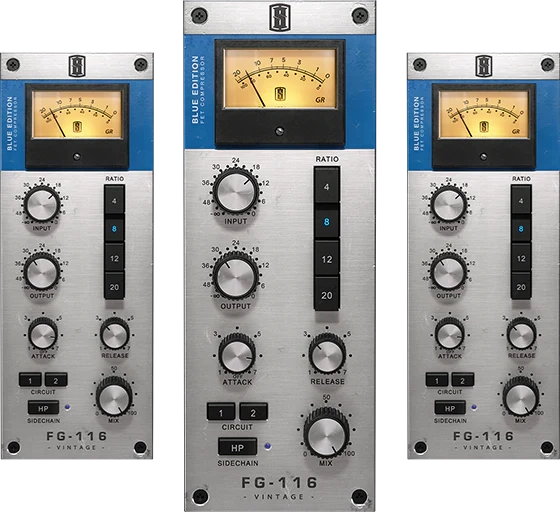The Urei 1176 was designed by Bill Putnam in 1966, For those who do not know, Bill Putnam is the father of the Universal Audio brand which he started in 1958. It eventually went out of business but was resurrected by his son Bill Putnam Jr. in 1999.
Bill Putnam had three audio companies, Urei , Universal Audio and Studio Electronics. This goes some way towards explaining, why the first 1176 units released were labelled Universal Audio on the front panel, and Urei on the rear. Some later models wore the Urei badge on the face plate…could it get any more confusing?
So, what is the big deal with the 1176? Why is it so loved by audio engineers and mix engineers alike? Why does Chris Lord Alge use 1176 limiters on vocals to this day? Why did Bruce Swedien use the Urei 1176 on every Michael Jackson vocal? The 1176 does something to the sound passing through it, this is NOT a bit of kit with a pure audio path, it colours the sound a lot. It is that colour along with its ability to compress just about anything and sound good doing it.
More modern compressors and limiters have far better specifications, and far better purity of signal path, but that seems to not matter, the love affair continues to this day. Signals passing through the 1176 come out sounding brighter and with more bite, which may well be because the compressor circuitry is knocking down the bass end of the signal, who knows, but it sounds good, it sounds ‘right’.
The Urei 1176 became an instant hit with engineers because of its lightning-fast attack and release times, its Class A output stage, and its wide range of sounds, ranging from a very subtle, near-transparent compression at 4:1, to its most notable setting, the “All Buttons In” mode, where all the ratio buttons are depressed simultaneously. (This was not intended in the original concept of this compressor)
This allowed the Urei 1176 to make a sound unlike any other compressor that came before. Distortion was increased, along with a plateaued slope and a lag time in response to the initial transient, creating an explosive sound on drum room mics, making an incredible grungy bass or electric guitar sound, or squeezing a vocal so it sat right in your face.
There are many variations of the 1176 including the 1176LN which is a ‘low noise’ version designed by Brad Plunkett, and it is that low noise version which is still in production today.
Revisions
The Urei 1176 underwent a number of revisions including the addition of Brad Plunkett’s low-noise (LN) circuitry to produce the 1176LN. This reduced the noise by 6 dB and redistributed the noise spectrum, producing even more noise reduction in the sensitive mid-range. Revisions D and E are reputed to sound the best.
- Revision A was the original (1967/6/20) design by Bill Putnam, it had a brushed aluminium face, blue paint and red power light. Serial numbers 011-125
- Revision AB improved stability and noise. (1967/11/20) Serial numbers 126-216
- Revision B incorporated changes to transistors. Serial numbers 217-1078
- Revision C, the 1176 LN, added low-noise circuits on additional circuit boards and reduced distortion and changed the faceplate to black. (1970/1/9) Serial numbers 1079-1238
- Revision D has no circuit changes, but the additional low-noise circuitry was incorporated into a new main circuit board. Serial numbers 1239-2331
- Revision E has a new power transformer that is now switchable between 110 V and 220 V. Serial numbers 2332-2611
- Revision F changed the output amplifier from a class A to a push-pull design. Metering circuit now uses an op-amp (1973/3/15) Serial numbers 2612-7052
- Revision G replaced the input transformer with a differential amplifier. Serial numbers 7053-7651
- Revision H changed the faceplate to silver and includes a red “Off’ button. This version is branded with blue UREI logo. Serial numbers 7652-
- Universal Audio Re-Issue (2000/4/1) is based on “D” and “E” models.























































